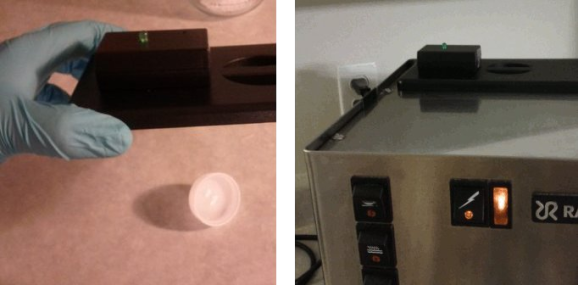I don’t think I’ve ever seen basket weaving done from the point of harvesting the strips from a log. I mean, I knew the bits had to come from somewhere, but usually I see things like leaves or vines. Obviously I just hadn’t really thought about it this way. It is quite interesting.
cooking hacks332 Articles
Coopering Wine Barrels
The process of making a high quality wine barrel is still done very much by hand. Each piece of wood is hand selected, even from the point of purchasing specific logs at auctions. In this video he is using many power tools and modern techniques, but still performing everything himself. I couldn’t find any videos of coopers using only hand tools, let me know if you find one.
This video is rather poor quality, but many more hand tools are used in the process.
Just in case you’re curious, here’s what the factory style production of these things is more like.
Incredible Bow Lathe Work In Morocco
Bow lathes are a fairly old an simple contraption. A bow is used to rotate a block of wood back and forth while tools can be used to shape it, just like a modern lathe. Despite the fact that the wood is oscillating instead of spinning in one direction, the results are very smooth.
Watch as this street vendor shows his skills with the bow lathe. I find it quite impressive how well he uses his foot. You can tell he’s been doing this for a very long time. I was also pleasantly surprised when that ring popped free, I wasn’t expecting it.
[thanks Rudolph]
Sugar Painting: Street Vendors Make Works Of Edible Art
Street vendors can sometimes show the best examples of refined skill. These street vendors in China have carved out a niche with a very specific type of candy. They pour heated sugar in various shapes and designs, then put it on a stick for your consumption. It doesn’t sound that impressive, but watch these videos and see the skill they show. As with many street vendors, you can tell these people have done this 10,000 times and the muscle memory could almost carry them on autopilot.
I would be happy to support street vendors like this.
Keurig Hack Now Automatically Fills The Water Reservoir

This hack makes your Keurig experience fully automatic. For those that aren’t familiar with the hardware: this type of coffee maker includes a water reservoir. Coffee is brewed One cup at a time by drawing from that water, quickly heating it, then forcing it through disposable pods containing coffee grounds and a filter. This takes the user-friendly design one step further by automatically keeping the water full.
This goes beyond the last water reservoir hack we saw. That one routed a water line to the machine, but included a manually operated valve. [Eod_punk] added a solenoid valve and level sensor in this project. The level sensor is submerged in the tank and is monitored by a Basic Stamp microcontroller. When the level is low the BS1 drives the solenoid via a transistor, letting the water flow. This is all shown in the video below.
Continue reading “Keurig Hack Now Automatically Fills The Water Reservoir”
Build Your Own Backyard Pizza Oven
Don’t heat up your house this summer, build your own backyard pizza oven instead. We love to using our garden produce, homemade dough, and fresh farmer’s market mozzarella to whip up a tasty pie in the summer. But it can be tricky to cook it on the grill and we hate heating up the oven when it’s hot out. This could be a perfect solution.
The footprint of the oven used to be a flower bed in [Furiousbal’s] yard. He removed the soil and side walls, laid down a bed of pea gravel, then started building the brick base for the oven. The base is insulated by encasing beer bottles in a bed of clay which he harvested locally. Fire brick then makes the floor of the cooking area as well as the arched opening. To support the clay during construction he built a dome of wet sand and covered it with damp newspaper. The clay is built up in layers before removing the sand from the inside. The final step (not shown above) is to build a little shelter to ensure the elements don’t wash away your hard work.
Of course you need to build your own fire inside to use it. If that’s too much work perhaps you should try solar cooking?
[via Reddit]
Help us decide, should this project gone on LIFE.hackaday?
Low Water Indicator For Coffee Maker Couldn’t Be Simpler

The coffee maker which [Donald Papp] uses every morning has a water reservoir on the back that can last for several days. This means he forgets to check it and from time to time will return to find that nothing has brewed. He decided to add a low-water indicator to the machine. His approach is about as simple as it gets and we admire that accomplishment.
If it were our project we’d probably try to complicate it in one way or another. The use of a microcontroller and ultrasonic rangefinder (like this tank level indicator from a February links post) would be overkill. No, [Donald] boiled down the electronics to a homemade switch, a blinking LED, and a battery. The switch is a flexible piece of metal attached to a plastic cap using some monofilament. The cap goes in the reservoir and floats until the water gets too low, it then pulls on that metal, completing a circuit between the battery and the LED. That’s it, problem solved.
Now he just needs to plumb the coffee maker into a water line and he’ll really be set.













